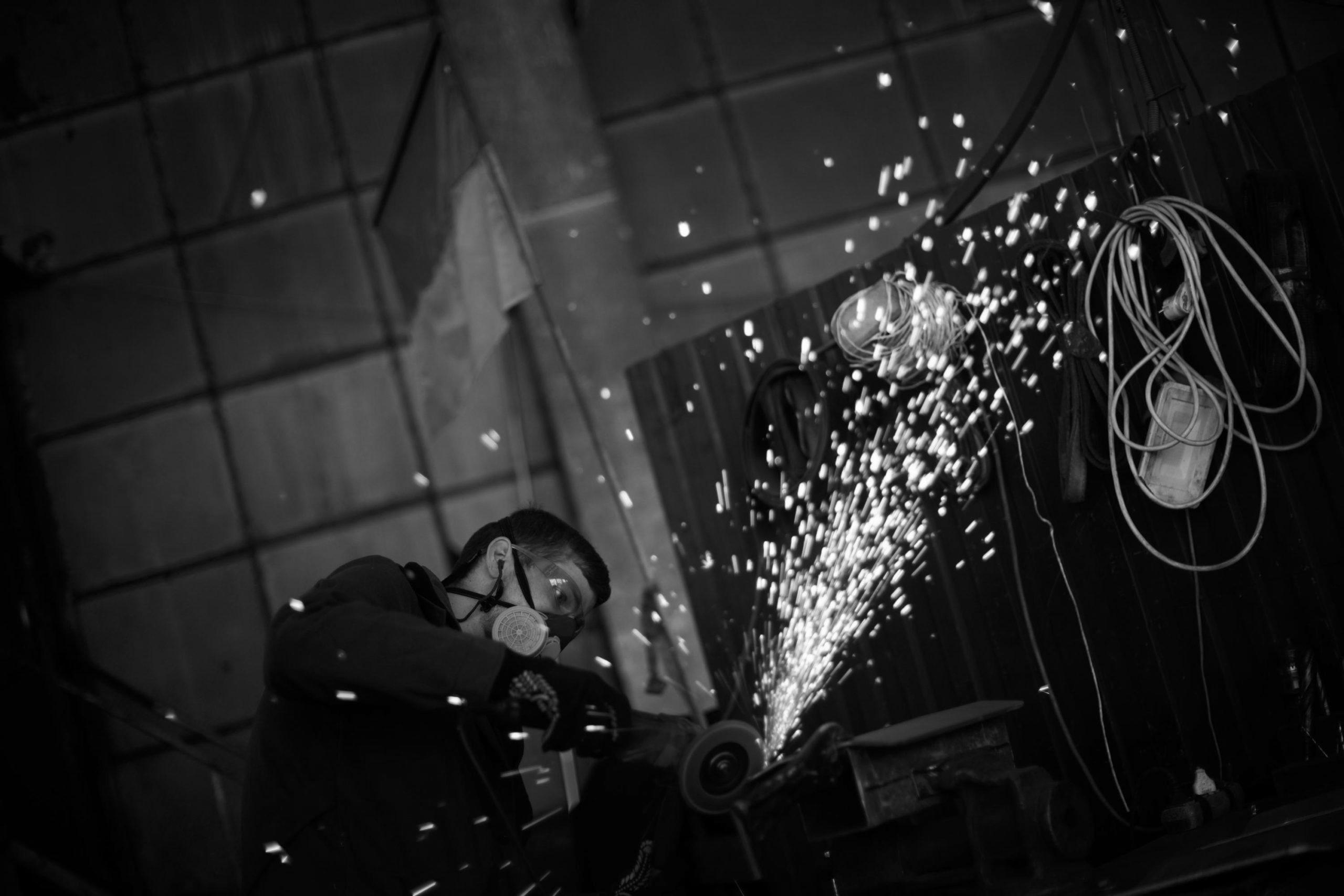Defend the body: Ukraine volunteers craft armor, camouflage
Warning: Undefined variable $post_id in /home/webpages/lima-city/booktips/wordpress_de-2022-03-17-33f52d/wp-content/themes/fast-press/single.php on line 26

2022-05-09 09:16:18
#Shield #physique #Ukraine #volunteers #craft #armor #camouflage
ZAPORIZHZHIA, Ukraine (AP) — Sparks fly as a round saw slices into metal, whereas welders close by work feverishly to the sound of blaring heavy metal. Upstairs, sewing machines clatter as women mark patterns on material being shaped into bulletproof vests.
An old industrial complex within the southeastern Ukrainian riverside metropolis of Zaporizhzhia has become a hive of exercise for volunteers producing all the things from body armor and anti-tank obstacles to camouflage nets, moveable heating stoves and rifle slings for Ukrainian soldiers preventing Russia’s invasion. One part focuses on autos, armor-plating some, changing others into ambulances. One other organizes food and medical deliveries.
With the front line about 50 kilometers (30 miles) from the city, some sections of the operation, such as the stitching of bulletproof vests, are working around the clock in shifts to satisfy demand. Crowdfunding has brought in sufficient money to buy metal from Sweden, Finland and Belgium, which is lighter than local steel, organizers say, an important high quality for physique armor.
The operation is the brainchild of local superstar Vasyl Busharov and his friend Hennadii Vovchenko, who ran a furniture-making enterprise. They named it Palianytsia, a kind of Ukrainian bread whose title many Ukrainians say cannot be pronounced correctly by Russians.
The operation relies fully on volunteers, who now quantity greater than 400 and are available from all walks of life, from tailors to craftsmen to lawyers. Other than these concerned in production, there are also drivers delivering humanitarian help and medical tools purchased by means of donated funds.
“I really feel I'm needed here,” said designer Olena Grekova, 52, taking a brief break from marking cloth for vests.
When Russia invaded on Feb. 24, she was in Thailand searching for inspiration for her spring assortment. Initially, she mentioned, she questioned whether or not it was an indication from God that she shouldn’t return. Her husband and two grownup sons urged her to not.
“However I decided that I had to go back,” she mentioned.
She had known Busharov for years. Arriving home on March 3, she gathered her gear the subsequent day and by March 5 was at Palianytsia. She’s been working there on daily basis since, bar one, generally even at night.
Shifting from designing backless ballgowns to creating practical bulletproof vests was “a brand new expertise for me,” Grekova said. But she sought feedback from soldiers for her designs, which have armor plates added. Now she helps to provide a number of versions, including a prototype summer time vest.
In one other section of the commercial advanced, 55-year-old Ihor Prytula was busy making a new camouflage web, winding pieces of dyed fabric by a string frame. A furniture-maker by trade, he joined Palianytsia at first of the battle. He had some military experience, he mentioned, so it was simple to get feedback from soldiers on what they wanted.
“We communicate the same language,” he stated.
For Prytula, the war is personal. His 27-year-old son was killed in late March as he helped evacuate people from the northern town of Chernihiv.
“The war and loss of life, it’s unhealthy, belief me, I do know this,” he mentioned. “It’s unhealthy, it’s tears, it’s sorrow.”
The decision for volunteers went out as quickly as the warfare began. Busharov announced his project on Fb on Feb. 25. The subsequent day, 50 folks turned up. “Subsequent day 150 folks, next day 300 people. ... And all collectively, we strive (to) protect our city.”
They started out making Molovov cocktails in case Russian soldiers advanced on Zaporizhzhia. In 10 days, they produced 14,000, he mentioned. Then they turned to producing anti-tank obstacles generally known as hedgehogs — three giant metallic beams soldered collectively at angles — used as part of town’s defenses. Quickly, Busharov and Vovchenko stated, they discovered another pressing want: there weren’t enough bulletproof vests for Ukraine’s troopers.
But learning how you can make one thing so specialised wasn’t simple.
“I wasn’t really related with the navy in any respect,” stated Vovchenko. “It took two days and three sleepless nights to understand what needs to be done.”
The staff went by means of varied sorts of steel, making plates and testing them to test bullet penetration. Some didn’t provide enough protection, others have been too heavy to be useful. Then that they had a breakthrough.
“It turns out that steel used for car suspension has very good properties for bullet penetration,” Vovchenko stated, standing in front of 4 shelves of test plates with varying levels of bullet injury. The one fabricated from automobile suspension steel confirmed dozens of bullet marks but none that penetrated.
The vests and all the things else made at Palianytsia are offered free to soldiers who request them, as long as they can show they are in the military. Each plate is numbered and every vest has a label noting it isn't on the market.
Thus far, Palianytsia has produced 1,800 bulletproof vests in two months, Busharov mentioned, including there was a ready listing of round 2,000 extra from throughout Ukraine.
Vovchenko stated they've heard about up to 300 people whose lives have been saved by the vests.
Understanding that is “incredibly inspiring and it keeps us going,” he mentioned.
____
Inna Varenytsia in Zaporizhzhia, Ukraine, contributed.
___
Observe all AP stories on the warfare in Ukraine at https://apnews.com/hub/russia-ukraine
Quelle: apnews.com